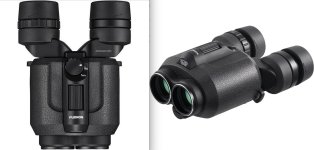Jason , why did you sell them and move on to the non IS 8x42 and the 15x50 Canon?
Good question, Paul. I wasn't overly thrilled with the 16x42 SIG image and sold it. I had used it for several months on my local walks and a backpacking trip where I viewed wildlife at extended distances where I didn't want to bring a scope and tripod. It was certainly functional, but I had more money invested into it than I thought it was worth (and I got it on sale for a very good price).
I did miss that magnification range and the IS though, so gave the 15x50 Canon a shot. I have been happy with the Canon overall since last fall, and just recently compared it to a different 16x42 SIG. I hadn't looked through a 16x42 since I sold mine, but side by side the Canon image is noticeably better to me and confirmed what I suspected. The SIG being much lighter and handier though.
I was somewhat tempted to keep the 10x30 SIG for my children to use. It showed a lot of heat haze compared to other 10x binoculars that I had on hand, but overall was still worth keeping for my kids just for the IS. In the end I sold that one too. I also bought the 10x30 on sale, but again felt that the image was not worth the money that I had invested in it.
For my needs, the 10x30 was somewhat similar to a Kowa 8x33 that I also had. About the same size. The Kowa with 2x less magnification obviously, but fairly steady for me. Neither had a stunning image to my eyes though, but maybe that is unrealistic for either. The Kowa was definitely better in low light but the 10x30 SIG was much better than I expected and really not that far behind for my eyes.
I'm still looking for a binocular for my kids - maybe the 6.5x Kowa - but I greatly prefer the image from my 8x42 over the 10x30, and a few 10x42 that I was trying out. I could actually see more detail at distance with the 8x42 than the 10x30 and those 10x42. The view is bright and just really stunning to my eyes.
The 8x42 is steady enough for me, and I just value a beautiful image over the IS for most of my uses. I do use a tripod on occasion though. I tend to view wildlife for extended periods of time, enjoying the view, colors, and their behavior. I am not into identifying or checking birds off of a list. I just sit and observe so that might explain my preference for a certain image quality. I suspect that if I simply needed to ID objects that I would perhaps not be so obsessed with certain image characteristics.
I would not say that the image from the 15x50 Canon is stunning though. Definitely sharp close to the edges compared to the 16x42 SIG, and flat, but more of a utilitarian instrument. I actually prefer the 15x56 SLC image for brightness and contrast, but for that application I do favor the IS over the pleasing image. I could see myself owning both the 15x50 Canon and 15x56 SLC though! The SLC would be used on a tripod.
Jason










